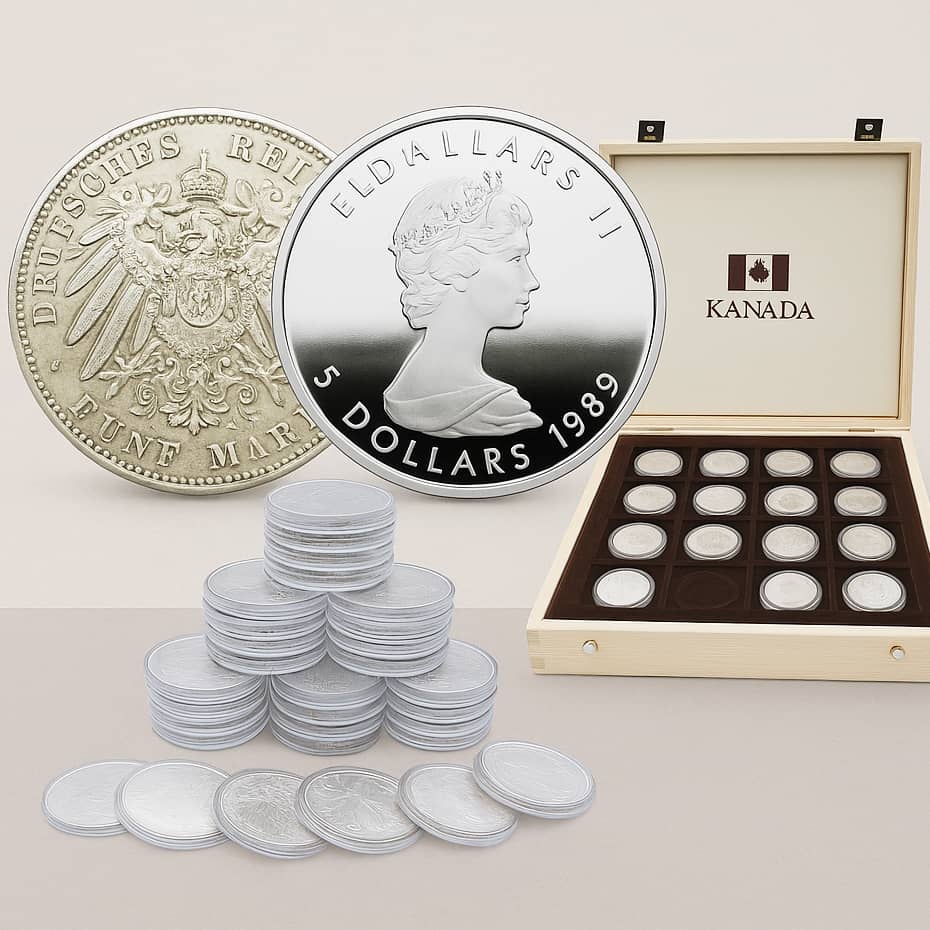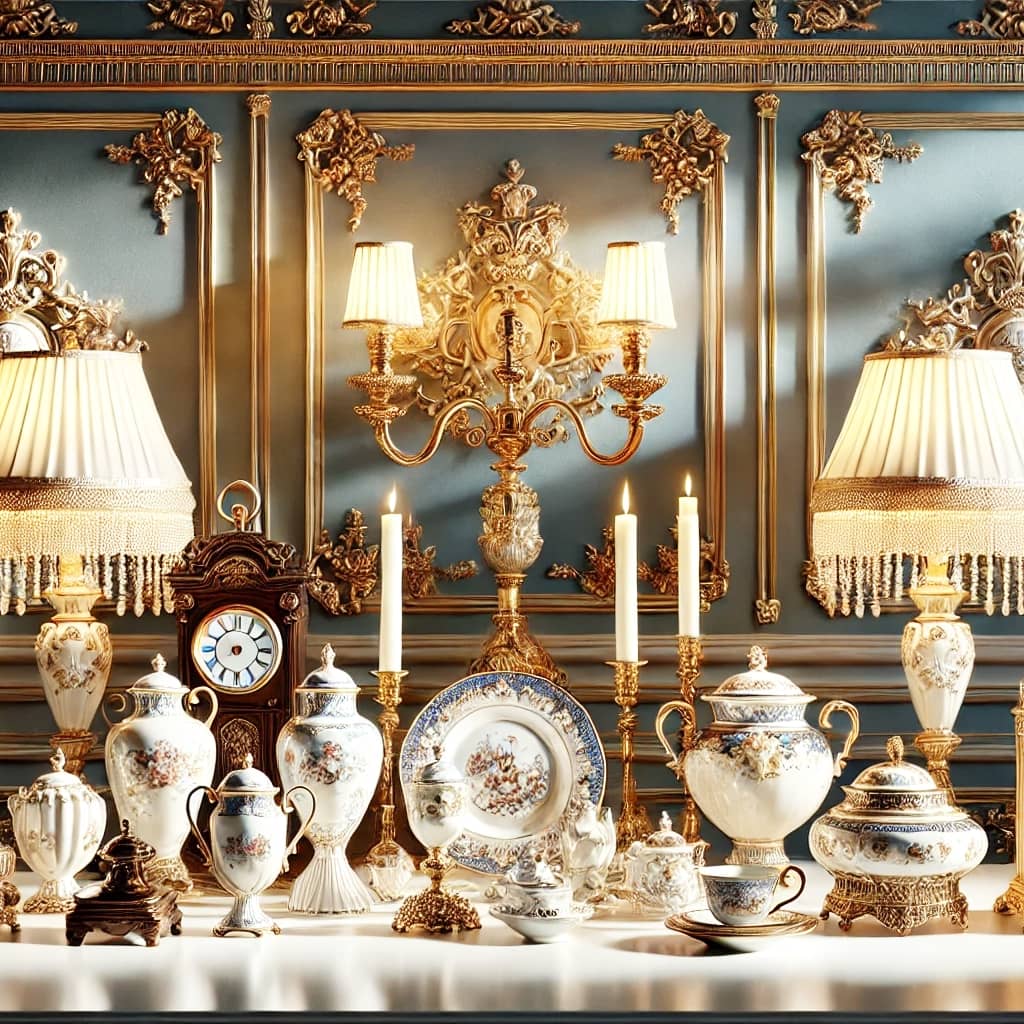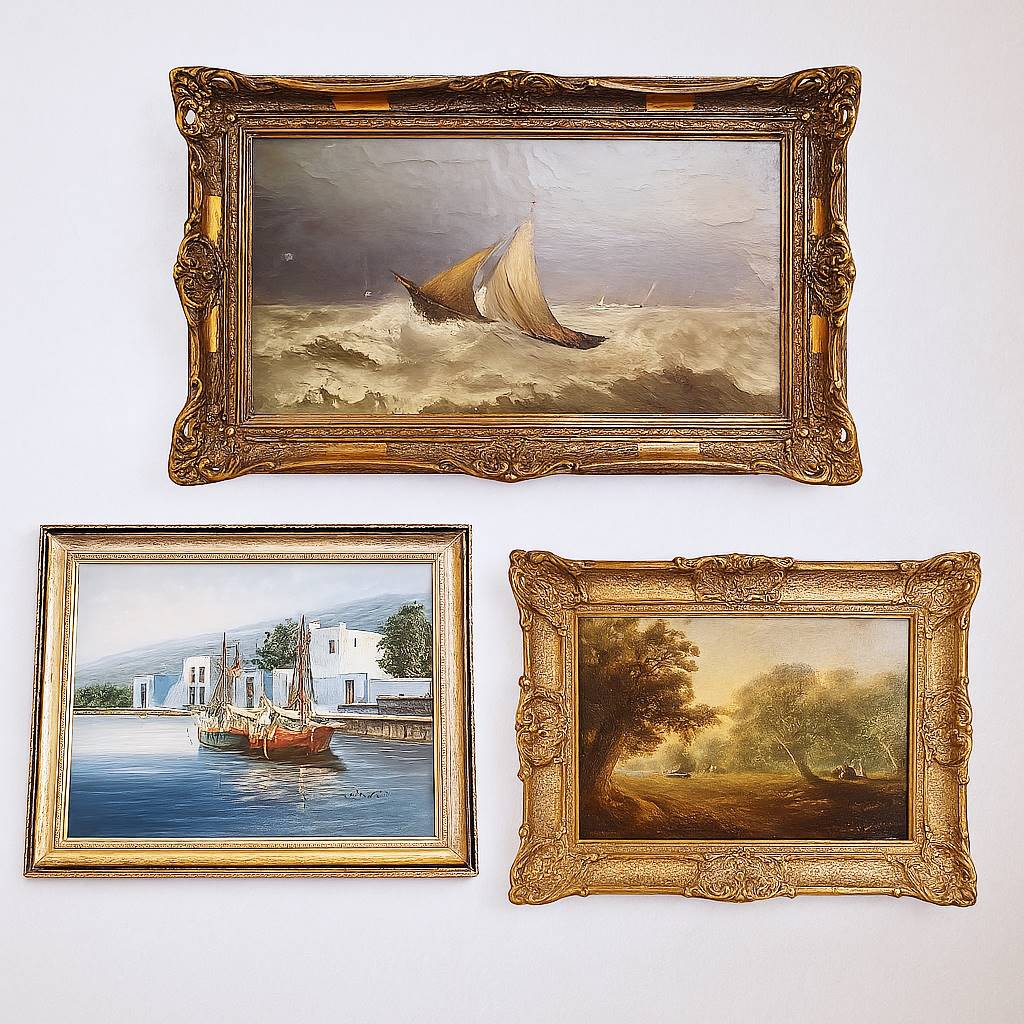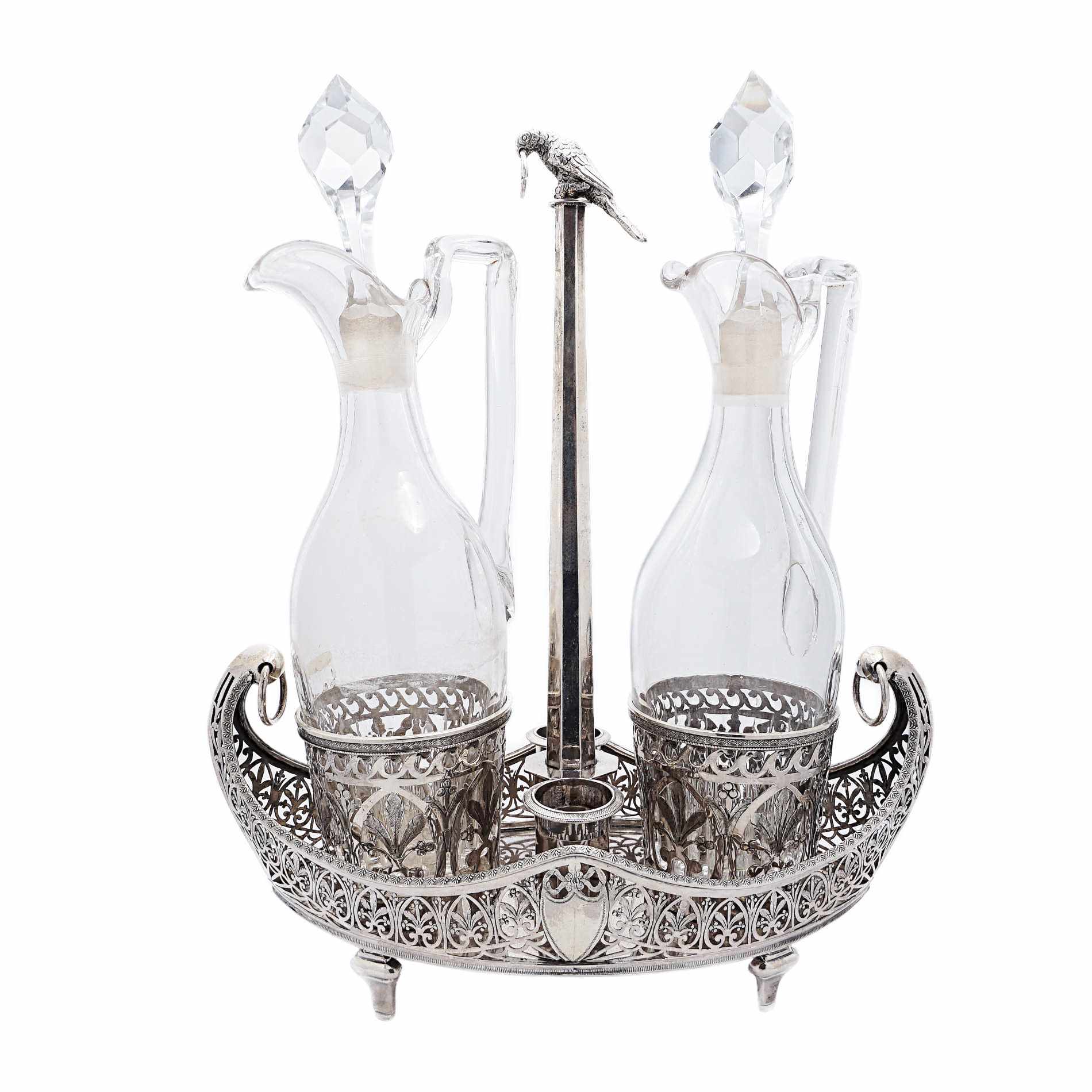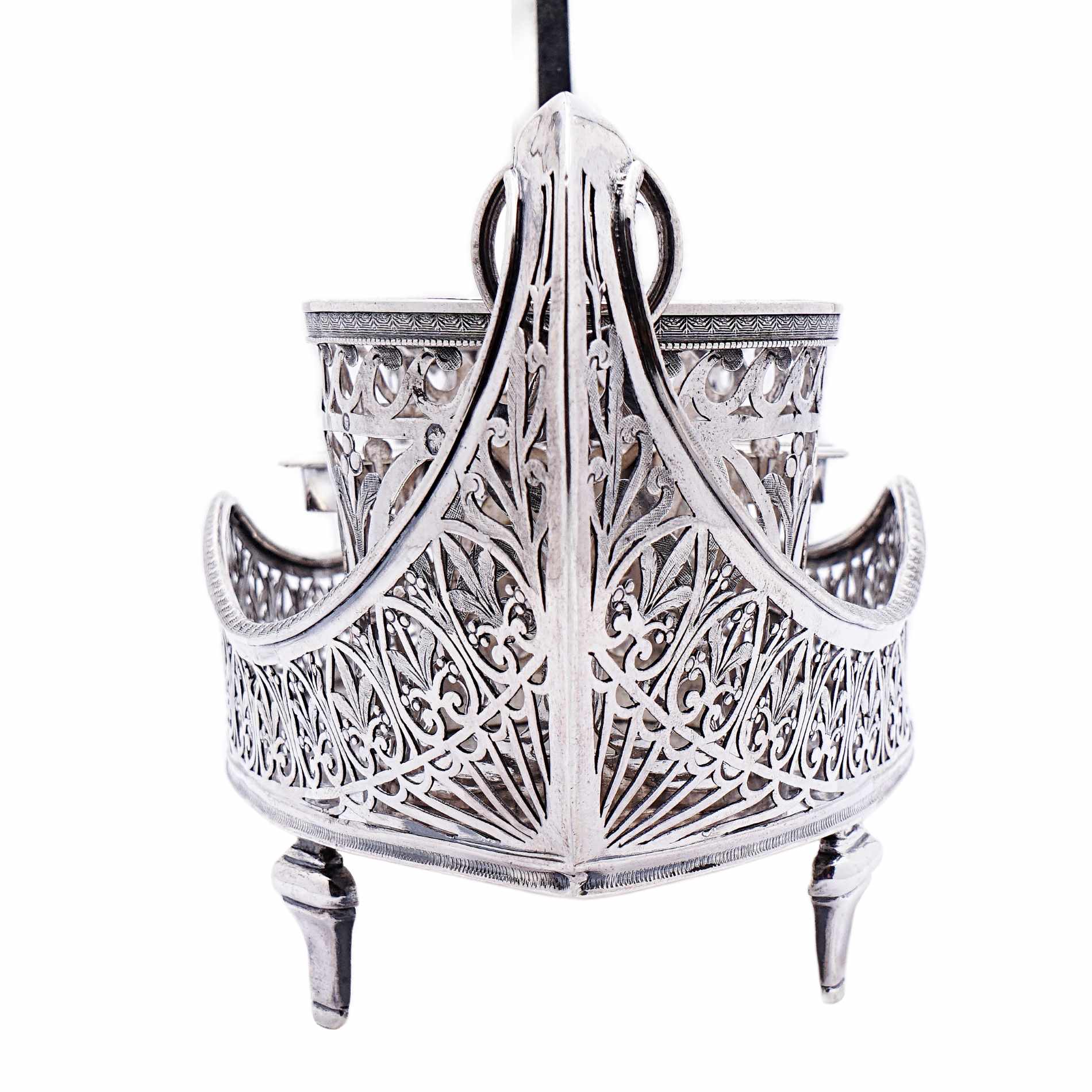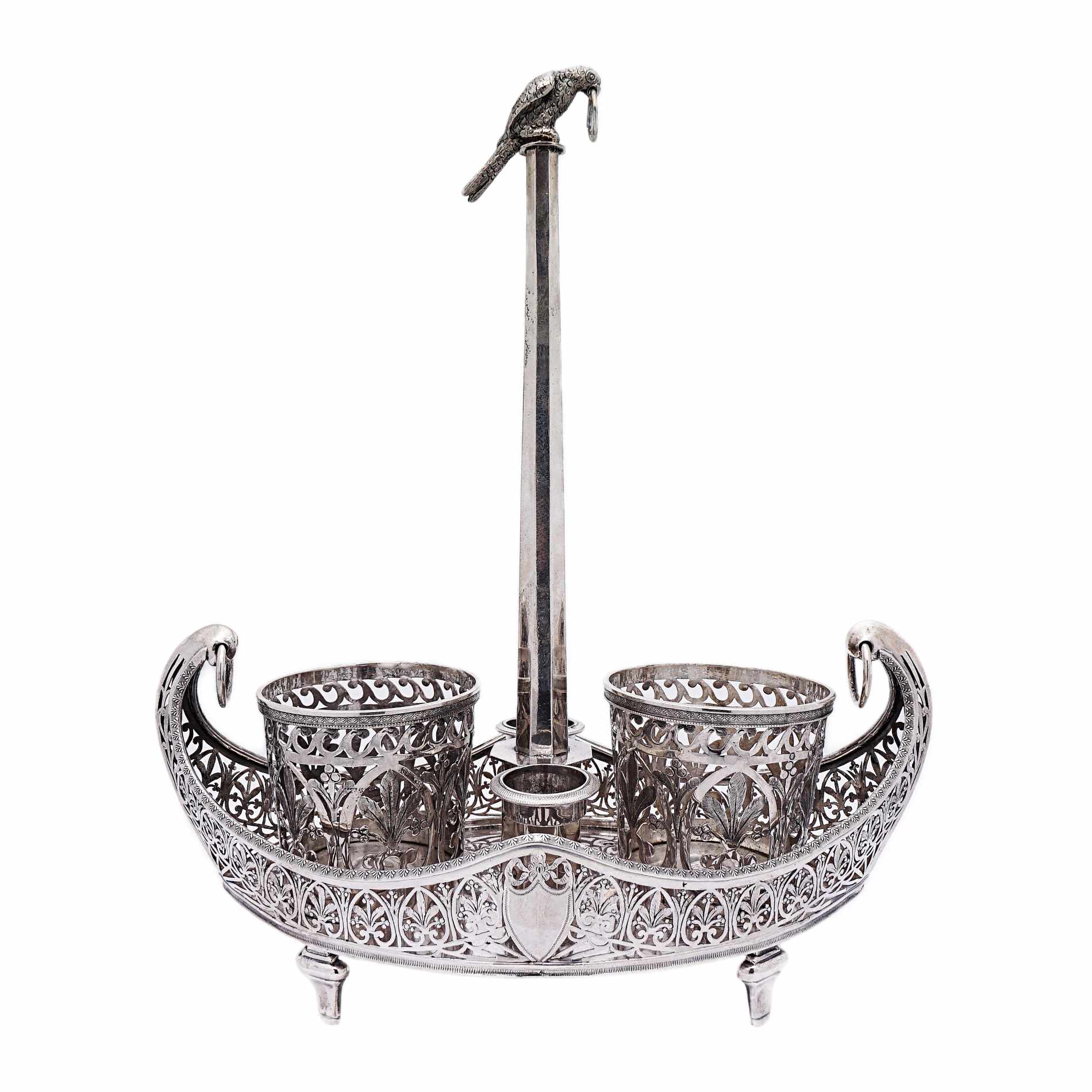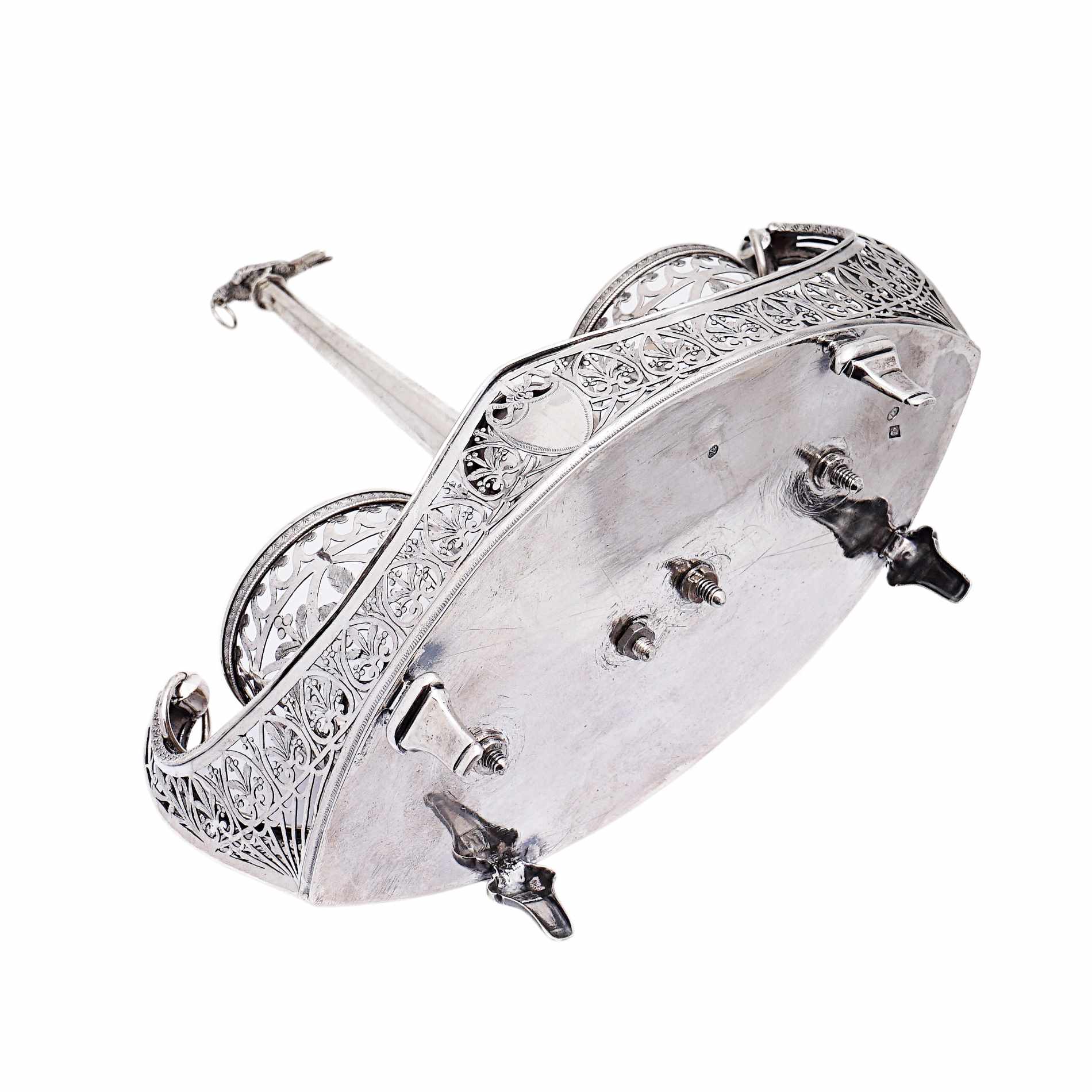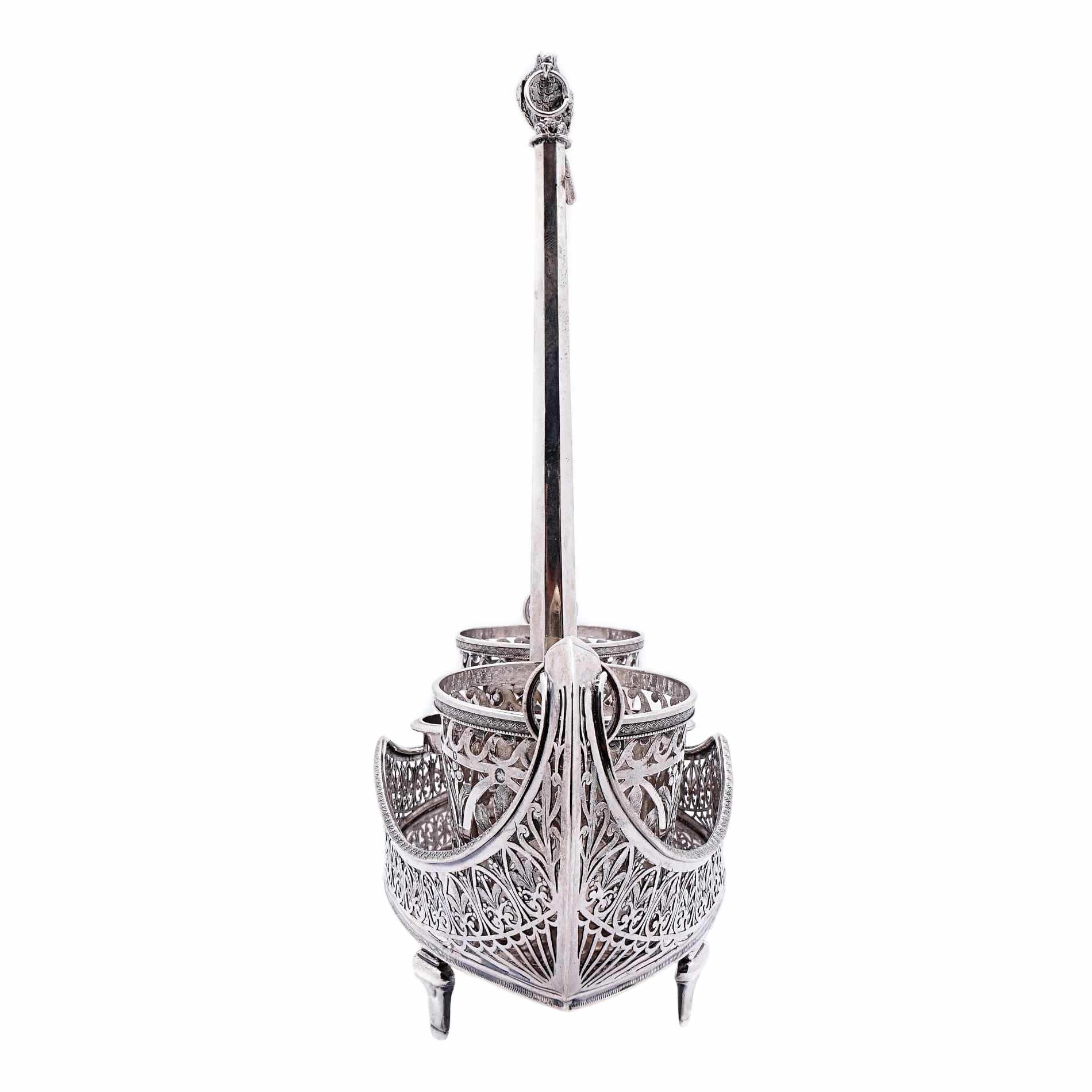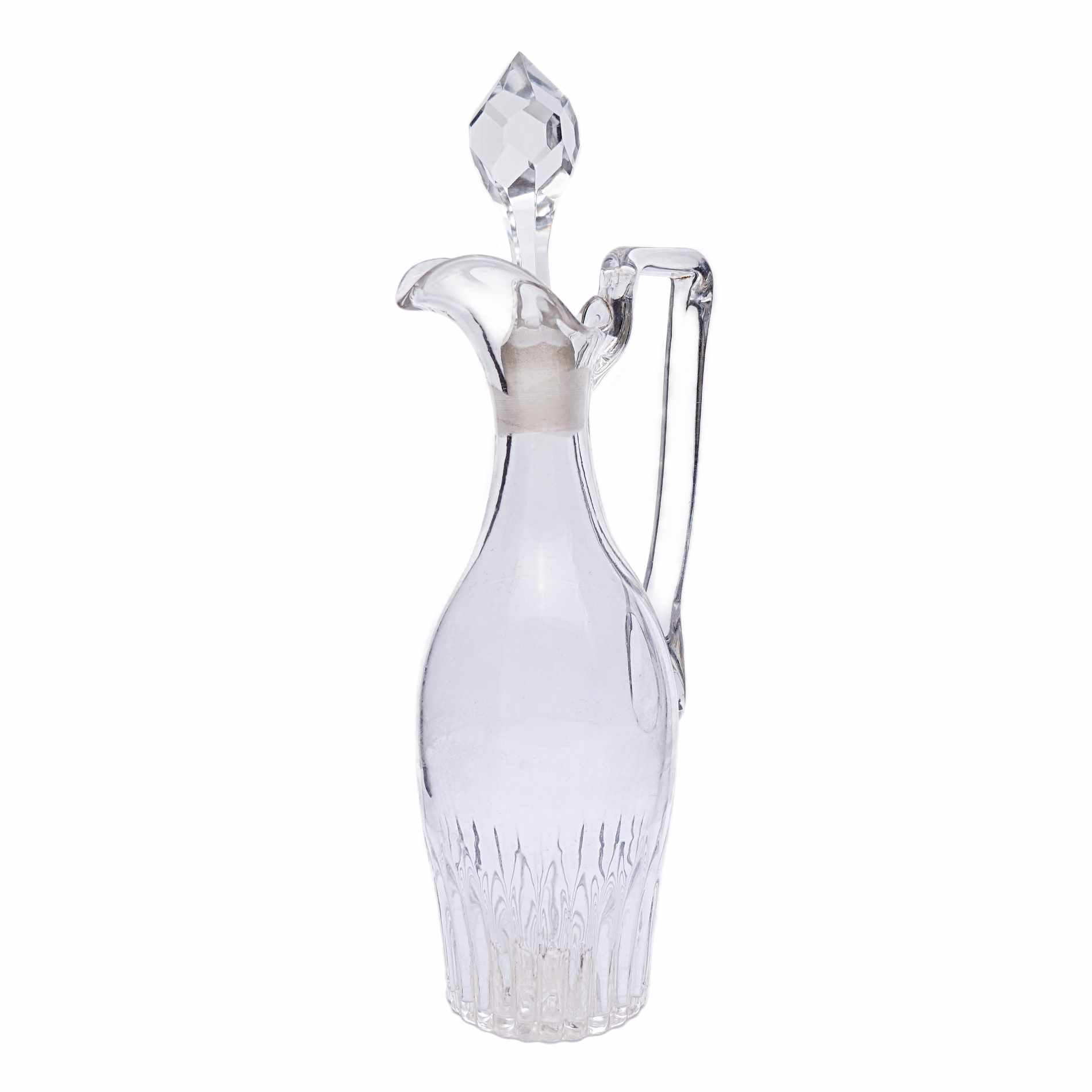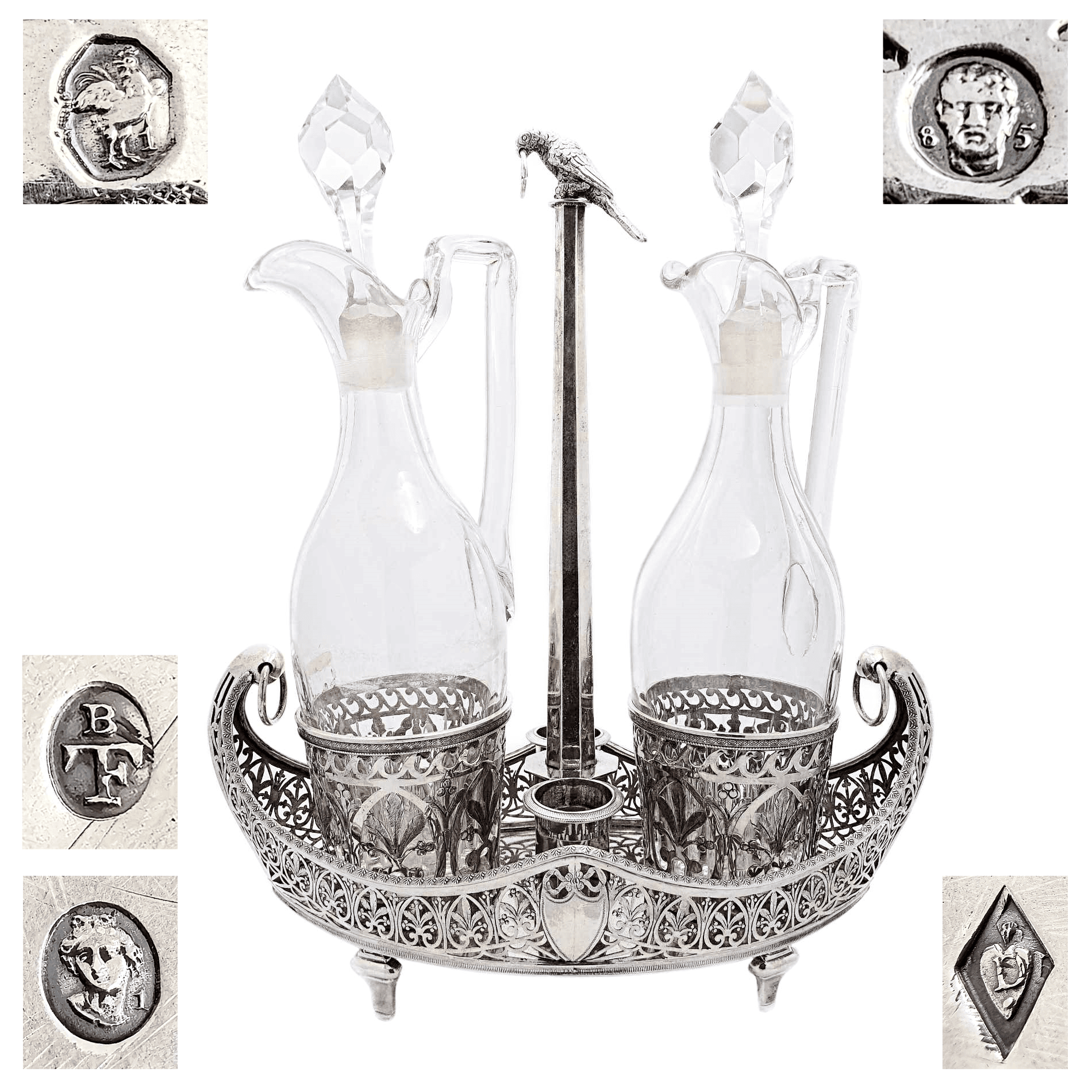Vinegar & oil cruet silver – French Revolution, Paris
Original price was: 5.900,00 €.4.000,00 €Current price is: 4.000,00 €.
without declared VAT | Differential taxation according to § 25a UStG. plus shipping and handling
Stunning silver menage for vinegar and oil from the time of the French Revolution around 1798. The exhibit in the form of a galley is elaborately made fine openwork. The focus here is on the palmette. This decorative motif is a symmetrical abstraction of a leaf of the fan palm and was already used in Babylonian art in the period two thousand before Chisti’s birth.
The cruet has an obelisk-like plain carrying handle with attached parrot, which has a silver ring in its beak. We would like to emphasize that such pieces in its make and from this period with this hallmark are absolutely rare to find.
The glass decanters are not original and have signs of use. Of course, we can refer you to art glassmakers who can make matching original decanters if you wish. Common at that time were blue glass or clear glass decanters.

Immediately ready for shipment
Delivery time 1 – 3 working days

Free Shipping
Within Germany from €99 order value

One month right of withdrawal
Valid for all products
1 in stock
| Designation | |
|---|---|
| Manufacturer | Unknown |
| Region | |
| Time | 2nd half 18th century, around 1798, French Revolution 1789-1799 |
| Hallmark | – Rooster with 1 – guarantee mark Paris 1798-1809 – Woman head – Non-official guarantee mark 1795-1797 France – Man head with 8 and 5 – guarantee sign medium objects, Paris – Master mark in oval – not yet identified – Master mark in diamond – not yet identified |
| Material | |
| Dimensions | approx. L 24.5 cm x W 11.2 cm x H 29.0 cm |
| Weight | – Total weight 1578 gram |
| State | – Menage A |
Information about our condition assessment
A+
The item has no traces of use and is therefore in pristine condition.
This valuation is unusual for antiques and describes an exception rather than the rule.
A
This item has minimal signs of use, such as very fine surface scratches or minimally rubbed gilding.
B+
This item has very few signs of use, such as fine surface scratches, a little rubbed gilding, or a small blemish which is noticeable to a minor degree.
B
This item has few signs of use, such as normal surface scratches, age appropriate rubbed gilding, or a small blemish which is not distractingly noticeable.
C+
This item has normal signs of use, such as normal or deeper surface scratches, a noticeably rubbed gilding, or a blemish which is noticeable.
C
This item has obvious signs of use, such as deeper surface scratches, a heavily rubbed gilding, or a major blemish which is noticeable.
D
This item has very obvious signs of use, such as very deep scratches, heavy wear marks and or damage.
Restored
Is it a restored item? You can find out everything you need to know about restoration here
French silverware from 1790 to 1800 impressively reflects the political and cultural changes of this turbulent era. During this period, France experienced the French Revolution and the transition to the Napoleonic era, which also manifested itself in art and craftsmanship.
The silversmithing of this period is characterized by a strong influence of classicism. Shapes became simpler and more elegant, with frequent use of ancient motifs and symbols. The use of silver as a material for tableware and cutlery became increasingly popular, and craftsmen mastered the art of engraving and decoration.
An outstanding example of French silverware from this period is the magnificent silverware sets made for royal and aristocratic households. These sets consisted of dinner spoons, forks, knives and other accessories, often with ornate decorations and royal coats of arms.
However, the revolution also brought about a transformation of silverware production. Aristocratic property was confiscated and melted down to finance the needs of the state. This led to the emergence of new designs and wider use of silver in middle-class society.
Overall, French silverware from 1790 to 1800 represents a fascinating chapter in the history of craftsmanship and offers a glimpse into the political and cultural changes of the era.
